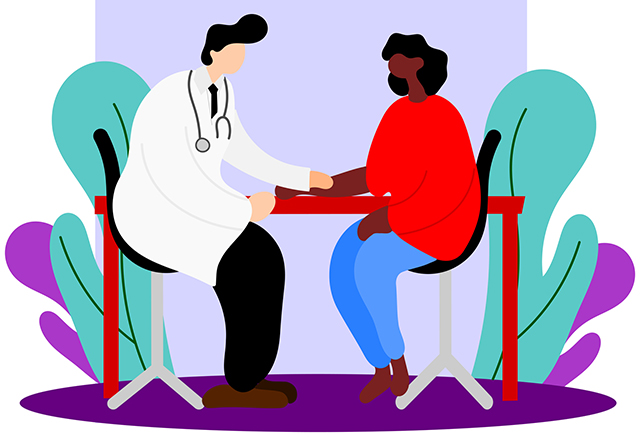This article has been deidentified to protect the anonymity and confidentiality of the patient in the story. Any matches in names or circumstances to other patients are entirely coincidental.
It’s early in intern year, and I’m a new "baby doctor". My mind is algorithmically checking off the boxes as I read the morning lab values: white counts fine, neutrophils normal, lymphocytes declining, kidney injury resolving as the creatinine returns to baseline. I recheck my math. The guidelines say the virus remains communicable seven days from 24 hours before the first appearance of the symptoms. My patient, a 50-something-year-old male with AIDS and substance use disorder, came in three days ago, two days after his symptoms started. He’s in an isolation room because he was sick with a variant of the flu. I go to tell him the good news: “You’re going to be released from infection prevention tomorrow, and you’re going to go to rehab.” He’s bursting with excitement. “Ok, let ME tell you the good news. You didn’t tell me before about my viral load — I’m good!” His HIV viral load was undetectable. “I told you all I was taking my drugs!”
My patient could read the lab values just as well as me. Maybe better, since he understood what mattered. The communicable window for the flu depended on whether he was immunocompromised: With his new lab values for HIV and particular cells from his immune system, he was not immunocompromised. I took those values into my calculation but didn’t reckon their importance to the patient. For him, the flu and isolation were minor inconveniences in the hospital. Control of the HIV viral load was his key to a future.
Modern medications can bring the virus under control quickly. But drugs can only work when they’re taken regularly. He had had trouble taking his drugs over the past decade. His body had grown so thin and withered under the virus’s assault that his failure to thrive had a medical name, cachexia of AIDS. What was different now? What was his motivation? He’d told me about recently taking care of his 2-year-old grandson. Family and life had changed. That was his motivation now to go to rehab for substance use and to reform, and to keep taking his HIV meds.
It’s early in intern year. My mind still goes algorithmically checking off the boxes as I read the morning lab values. Yes, I now know the communicable window for parainfluenza virus. But now I try to attach those lab values to my patient’s aspirations, goals, motivations. What matters? How can I help? I’m learning to read the room and understand my whole patient.
Related Content
- Slowing Down
- Pieces of a Life
- A Lingering Question, A Fading Heartbeat
- The Often-Overlooked Side of the Physician-Patient Relationship
Want to read more from the Johns Hopkins School of Medicine? Subscribe to the Biomedical Odyssey blog and receive new posts directly in your inbox.
